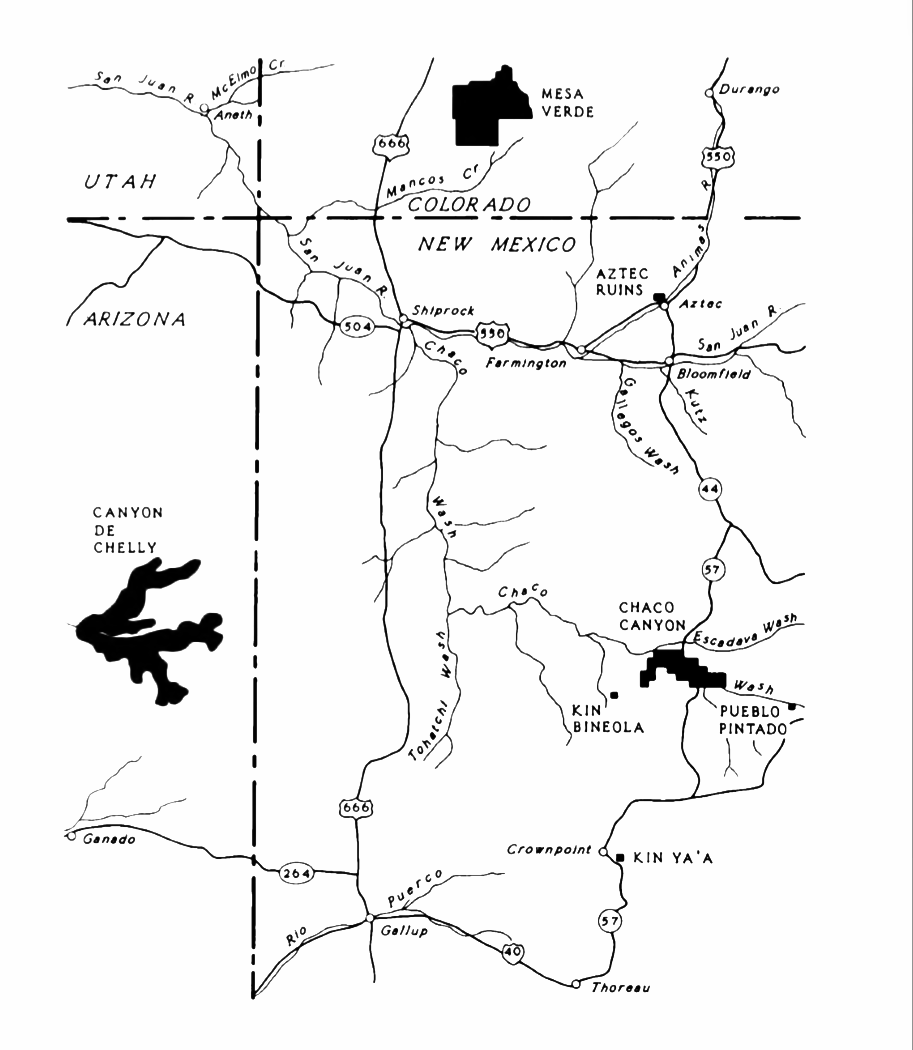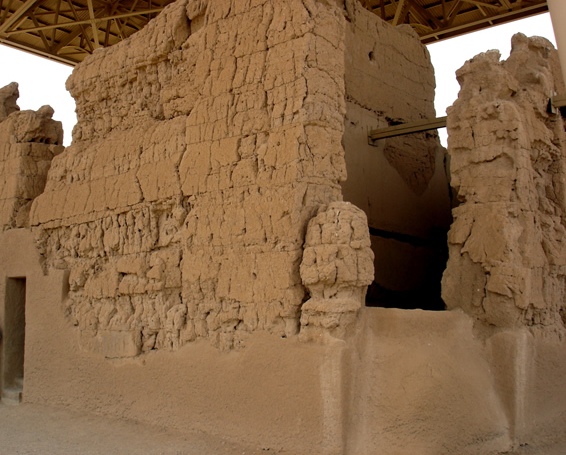|
Mogollon Culture
The Mogollon culture ( ) is a pre-historic archaeological culture of Native American peoples from Southern New Mexico and Arizona, Northern Sonora and Chihuahua, and Western Texas. The northern part of this region is Oasisamerica, while the southern span of the Mogollon culture is known as Aridoamerica. The Mogollon culture is one of the most well known prehistoric Southwestern cultural divisions of the Southwestern United States and Northern Mexico. The culture flourished from the archaic period, , to either 1450 or 1540 CE, when the Spanish arrived. Etymology The name ''Mogollon'' comes from the Mogollon Mountains, which were named after Don Juan Ignacio Flores Mogollón, Spanish Governor of New Spain (including what is now New Mexico) from 1712 to 1715. The name was chosen and defined in 1936 by archaeologist Emil W. Haury. Cultural traits The distinct facets of Mogollon culture were recorded by Emil Haury, based on his excavations in 1931, 1933, and 1934 at the Har ... [...More Info...] [...Related Items...] OR: [Wikipedia] [Google] [Baidu] |
Juan Ignacio Flores Mogollon
Juan Ignacio Flores Mogollon was a Spanish military officer who served as governor of Santa Fe de Nuevo Mexico between 1712 and 1715, replacing Jose Chacón Medina Salazar y Villaseñor. Life and career Mogollon joined the Spanish Army in his youth, where he excelled, attaining the title of Official. Dorothy Lippert, Stephen J. Spignesi (2008)Native American History For Dummies Page 51. Mogollon was appointed governor of New Mexico by Felipe V and, having reached Santa Fe, occupied the office on October 5, 1712. During the first year he administered the territory, a Suma Indians revolt broke out against the government of New Mexico in El Paso. Thus, Mogollon had to suppress the revolt with a troop. His position as governor lasted a few years, because it was discovered that he had been involved in an embezzlement of funds, so he was removed from office on October 5, 1715, being replaced by Felix Martínez de Torrelaguna. Shortly after that, Mogollon left New Mexico. The trial w ... [...More Info...] [...Related Items...] OR: [Wikipedia] [Google] [Baidu] |
Peabody Museum Of Archaeology And Ethnology
The Peabody Museum of Archaeology and Ethnology is a museum affiliated with Harvard University in Cambridge, Massachusetts, United States. Founded in 1866, the Peabody Museum is one of the oldest and largest museums focusing on anthropological material, with particular focus on the ethnography and archaeology of the Americas. The museum is caretaker to over 1.2 million objects, some of documents, 2,000 maps and site plans, and about 500,000 photographs. The museum is located at Divinity Avenue on the Harvard University campus. The museum is one of the four Harvard Museums of Science and Culture open to the public. History The museum was established through an October 8, 1866, gift from wealthy American financier and philanthropist George Peabody, a native of South Danvers (now eponymously named Peabody, Massachusetts). Peabody committed $150,000 to be used, according to the terms of the trust, to establish the position of Peabody Professor-Curator, to purchase artifacts, and ... [...More Info...] [...Related Items...] OR: [Wikipedia] [Google] [Baidu] |
Amerind Foundation
The Amerind Foundation is a museum and research facility dedicated to the preservation and interpretation of Amerindian, Native American cultures and their histories. Its facilities are located near the village of Dragoon, Arizona, Dragoon in Cochise County, Arizona, about 65 miles east of Tucson, Arizona, Tucson in Texas Canyon. According to the Foundation's literature, "Amerind" is a contraction of the words "Native American name controversy, American" and "Indian". History William Shirley Fulton (1880–1964), an archaeologist, established the Amerind Foundation in 1937. Building The Amerind Foundation's building was designed by Tucson architect Merritt Starkweather and contains one of the finest collections of archaeology, archaeological and ethnology, ethnological artifacts in the country as well as a sizable research library. Museum exhibits The museum's permanent exhibits include archaeological artifacts from the Amerind property by founder William Shirley Fulton and ... [...More Info...] [...Related Items...] OR: [Wikipedia] [Google] [Baidu] |
University Of Arizona
The University of Arizona (Arizona, U of A, UArizona, or UA) is a Public university, public Land-grant university, land-grant research university in Tucson, Arizona, United States. Founded in 1885 by the 13th Arizona Territorial Legislature, it was the first university established in the Arizona Territory. The University of Arizona is one of three universities governed by the Arizona Board of Regents (the University of Arizona, Arizona State University, and Northern Arizona University). , the university enrolled 53,187 students in 22 separate colleges/schools, including the Eller College of Management, the Wyant College of Optical Sciences, the University of Arizona College of Medicine – Phoenix, College of Medicine – Phoenix, the University of Arizona College of Medicine – Tucson, College of Medicine – Tucson, and the James E. Rogers College of Law. The university is Carnegie Classification of Institutions of Higher Education, classified among "R1: Doctoral Universities ... [...More Info...] [...Related Items...] OR: [Wikipedia] [Google] [Baidu] |
Arizona State Museum
The Arizona State Museum (ASM), founded in 1893, was originally a repository for the collection and protection of archaeological resources. Today, however, ASM stores artifacts, exhibits them and provides education and research opportunities. It was formed by authority of the Arizona Territorial Legislature. The museum is operated by the University of Arizona, and is located on the university campus in Tucson. History Native peoples have existed in the North American continent for more than ten millennia. ASM investigates habitations, lifeways, art and communication in which these peoples in the Southwest engaged. Museum staff investigate archaeological sites of past occupiers of North America to discover how people lived, what they ate, what they wore and how they created their art. These people lived day-to-day, created homesites and villages that, in many cases, have crumbled or been destroyed by natural forces. An early and significant director of the museum, Emil W. Ha ... [...More Info...] [...Related Items...] OR: [Wikipedia] [Google] [Baidu] |
Field Museum Of Natural History
The Field Museum of Natural History (FMNH), also known as The Field Museum, is a natural history museum in Chicago, Illinois, and is one of the largest such museums in the world. The museum is popular for the size and quality of its educational and scientific programs, and its extensive scientific sample (material), specimen and Cultural artifact, artifact collections. The permanent exhibitions, which attract up to 2 million visitors annually, include fossils, current cultures from around the world, and interactive programming demonstrating today's urgent conservation (ethic), conservation needs. The museum is named in honor of its first major Benefactor (law), benefactor, Marshall Field, the Department store, department-store magnate. The museum and its collections originated from the 1893 World's Columbian Exposition and the artifacts displayed at the fair. The museum maintains a temporary exhibition program of traveling shows as well as in-house produced topical exhibitions. ... [...More Info...] [...Related Items...] OR: [Wikipedia] [Google] [Baidu] |
Pit-houses
A pit-house (or pit house, pithouse) is a house built in the ground and used for shelter. Besides providing shelter from the most extreme of weather conditions, this type of earth shelter may also be used to store food (just like a pantry, a larder, or a root cellar) and for cultural activities like the telling of stories, dancing, singing and celebrations. General dictionaries also describe a pit-house as a dugout, and it has similarities to a half-dugout. In archaeology, a pit-house is frequently called a sunken-featured building and occasionally (grub-) hut or grubhouse, after the German name ''Grubenhaus''. They are found in numerous cultures around the world, including the people of the Southwestern United States, the ancestral Pueblo, the ancient Fremont and Mogollon cultures, the Cherokee, the Inuit, the people of the Plateau, and archaic residents of Wyoming (Smith 2003) in North America; Archaic residents of the Lake Titicaca Basin (Craig 2005) in South America; An ... [...More Info...] [...Related Items...] OR: [Wikipedia] [Google] [Baidu] |
Ancient Pueblo Peoples
The Ancestral Puebloans, also known as Ancestral Pueblo peoples or the Basketmaker-Pueblo culture, were an ancient Native American culture of Pueblo peoples spanning the present-day Four Corners region of the United States, comprising southeastern Utah, northeastern Arizona, northwestern New Mexico, and southwestern Colorado. They are believed to have developed, at least in part, from the Oshara tradition, which developed from the Picosa culture. The Ancestral Puebloans lived in a range of structures that included small family pit houses, larger structures to house clans, grand pueblos, and cliff-sited dwellings for defense. They had a complex network linking hundreds of communities and population centers across the Colorado Plateau. They held a distinct knowledge of celestial sciences that found form in their architecture. The kiva, a congregational space that was used mostly for ceremonies, was an integral part of the community structure. Archaeologists continue to deba ... [...More Info...] [...Related Items...] OR: [Wikipedia] [Google] [Baidu] |
Hohokam
Hohokam was a culture in the Indigenous peoples of the North American Southwest, North American Southwest in what is now part of south-central Arizona, United States, and Sonora, Mexico. It existed between 300 and 1500 CE, with cultural precursors possibly as early as 300 BCE. Archaeologists disagree about whether communities that practiced the culture were related or politically united. According to local oral tradition, Hohokam societies may be the ancestors of the historic Akimel Oʼodham, Akimel and Tohono Oʼodham in Southern Arizona. The origin of the culture is debated. Most archaeologists either argue it emerged locally or in Mesoamerica, but it was also influenced by the Northern Pueblo culture. Hohokam settlements were located on trade routes that extended past the Hohokam area, as far east as the Great Plains and west to the Pacific coast. Hohokam societies received a remarkable amount of immigration. Some communities established significant markets, such a ... [...More Info...] [...Related Items...] OR: [Wikipedia] [Google] [Baidu] |
San Francisco River (central Arizona)
The San Francisco River is a river in the southwest United States, the largest tributary of the Upper Gila River The Gila River (; O'odham ima Keli Akimel or simply Akimel, Quechan: Haa Siʼil, Maricopa language: Xiil) is a tributary of the Colorado River flowing through New Mexico and Arizona in the United States. The river drains an arid watershed of .... It originates near Alpine, Arizona and flows into New Mexico before reentering Arizona and joining the Gila downstream from Clifton. See also * List of Arizona rivers * List of New Mexico rivers * List of tributaries of the Colorado River References External links San Francisco River {{Coord, 32.9761743, -109.3720169, display=title, format=dms Rivers of Arizona Rivers of New Mexico Rivers of Greenlee County, Arizona Rivers of Apache County, Arizona Tributaries of the Gila River Rivers of Catron County, New Mexico ... [...More Info...] [...Related Items...] OR: [Wikipedia] [Google] [Baidu] |
Mimbres, New Mexico
Mimbres is a census-designated place in Grant County, New Mexico, United States. Its population was 667 as of the 2010 census. Mimbres has a post office with ZIP code 88049. New Mexico State Road 35 passes through the community. The post office was established in 1886. It was named after the Mimbres River The Mimbres is a river in southwestern New Mexico. Course The Mimbres forms from snowpack and runoff on the southwestern slopes of the Aldo Leopold Wilderness in the Black Range at in Grant County. The river ends in the Guzmán Basin, a s .... Demographics References Census-designated places in New Mexico Census-designated places in Grant County, New Mexico {{NewMexico-geo-stub ... [...More Info...] [...Related Items...] OR: [Wikipedia] [Google] [Baidu] |






